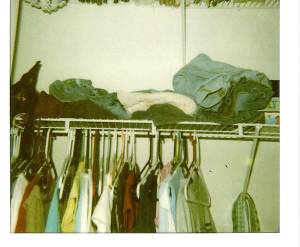Archives:
Cypress Meadows
Private Residence
Tampa
July 8, 2006
Cypress Meadows
Private Residence
Tampa
July 8, 2006
In the field of paranormal investigation, it is always advisable to host a variety of equipment. The SPIRITS of St. Petersburg often utilize hand held equipment for its ease of use and portability. Among the equipment hosted is a Polaroid camera. After years of use with a limited amount of photos allowed per investigation due to the expense of the film, the investigation at Cypress was the first, and perhaps only, one to provide results with this particular device.
Polaroid cameras are unique. A type of film camera, they are also miniature photo studios as they produce an instant result which allows an investigator immediate access to the image. Film cameras, which are still used in limited quantity for SPIRITS investigation, require additional time for development. However, unlike digital cameras, Polaroid cameras utilize chemicals, rather than pure mechanics, to capture an image. These chemicals, in theory, may react differently when in contact with the supernatural. At the very least it is a unique way of capturing an image. It even mimics the ghostly as the images manifest slowly before the eyes of the viewer!
To understand the camera one must understand the chemical reactions of the film. This is not an easy process to describe. Essentially, the film is a plastic sheet that contains several color layers with film development chemicals placed in between. All of these layers sit on top of a black base.
The essential arrangement of the film is such:
Clear Plastic
Acid Layer
Timing Layer
Image Layer (consisting of multiple layers):
Light Sensitive Layer (blue)
Yellow Dye Developer
Spacer
Light Sensitive Layer (green)
Magenta Dye Developer
Spacer
Light Sensitive Layer (red)
Cyan dye Developer
Base (black)
Black Layer
The arrangement is a chemical chain reaction set in motion when the picture is taken. The reactive chemicals are released from the border of the plastic sheet when the film passes through a pair of rollers, which spreads the materials into the middle of the film sheet. As the reagent spreads, it reacts with the other chemicals stored in the film. The chemicals dissolve the developer dye which diffuses up toward the image layer. The metallic silver areas at each layer take the dyes so that they stop moving up. The acid layer in the film reacts with the alkali, which allows the image to be seen through the chemicals (this makes the development of the image visible by the viewer watching the process). [Thank you to “Howstuffworks” http://electronics.howstuffworks.com/question605.htm].
Some ghost investigators still recommend using Polaroid cameras, though this may become difficult in the near future. Polaroid, which marketed the first instant camera in 1948, stopped making the cameras for commercial use in 2007. The company has also ceased making film. The supply at present is projected to last until 2009, though Polaroid has offered to sell the process to a manufacturer to satisfy photographers in a niche market (http://thelede.blogs.nytimes.com/2008/02/08/polaroid-abandons-instant-photography/). Alas, that may not help paranormal investigators. Many, it seems, have already abandoned the Polaroid for higher-tech devices.
The protocol with the SPIRITS investigation process for the use of this camera is simple. As some believe that the film is sensitive to movement (and to avoid the customary urge to “wave” the film dry), the SPIRITS photographer snaps a picture and then immediately places it, in front of eye witnesses, upon a flat surface. As the investigation proceeds, the photographs are retrieved, again in front of witnesses, during the second walk-through and examined.
Cypress, in and among the Polaroid shots, had already proved an interesting investigation. The homeowners had some disagreement to the level of the haunting. One believed the home was incredibly haunted while the other did not think that the home was haunted at all. During the investigation, one member was actively pushed during a session that included fluctuating EMF fields, temperature drops, and EVP results. Perhaps for this reason, it is no surprise that the Polaroid also picked up results.
The images are slight. In one room there is an odd shadow that did not appear on other digitals nor in any of the replicated Polaroid images. In the closet of one bedroom, where the entity had been seen by another family member, a slight orb also appeared.
Though these images were not the most remarkable part of the investigation, they were, in themselves, unique. Out of the stacks of unscanned (and unremarkable) instant camera images, these are the few that appear on the SPIRITS pages. Are they flukes or something more? It is up to the reader to decide.
For interested investigators it is advisable to try to take a few Polaroid shots just to try it out. After all, this equipment, like the ghosts themselves, is about to fade into history.
HOMEOWNER INTERVIEW:
Reveals that the daughter and wife have had similar experience with seeing a man or shadow wearing a hat. The wife has experienced feelings of someone pushing her down in bed and not being able to sleep. Something or someone has been shaking her awake, watching her and making her feel a sense of dread. The someone watching is not benevolent. The wife also states that the cat sleeps with the daughter and that when the cat was at the groomers, more activity occurred. When the daughter left for camp, the cat began sleeping with her (on his own accord). It was also confirmed that the entity does not enter the daughter's room, but that he does stand out side and watch her.
